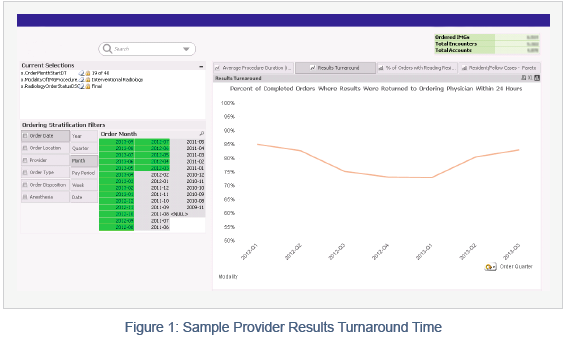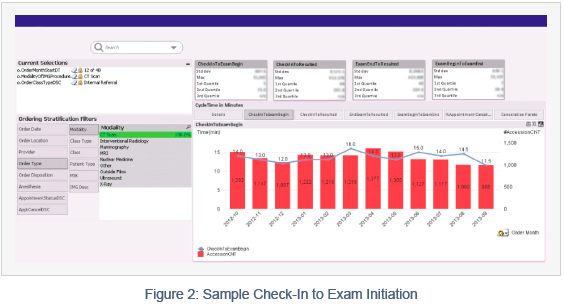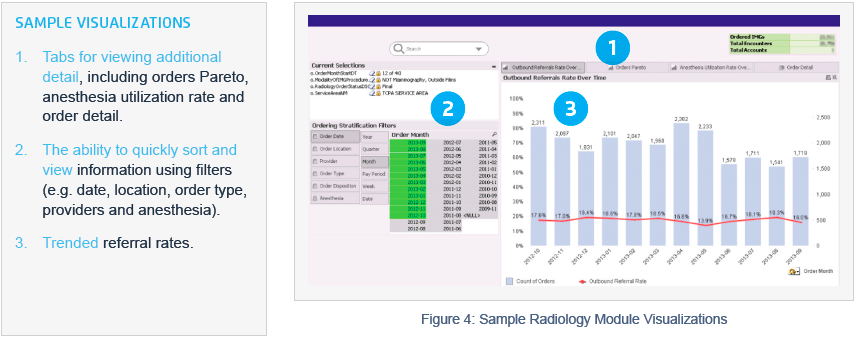Texas Children’s Hospital radiology practice administrators previously spent hours each week manually reviewing reports, limiting their ability to optimize operations and focus on patient care. By utilizing the analytics platform, administrators can now access near-real-time insights on key performance metrics, including average procedure duration, results turnaround time, anesthesia utilization, and patient flow cycle times. This transformation has streamlined operations, improved patient satisfaction, and generated significant savings—estimated at $400K—by leveraging actionable insights from analytics.
Texas Children's Hospital, a not-for-profit organization consistently ranked among the top children’s hospitals in the nation, has always looked for ways to improve the quality and efficiency of its patient care. Quality and efficiency have become even more important to the hospital amid the impending transformation of the reimbursement system from fee-for-service to value-based payment.
Texas Children’s turned to a technology and a data-driven approach to enable its clinicians to deliver better, more efficient patient care. The hospital worked with Health Catalyst to implement the Health Catalyst late-Binding Enterprise Data Warehouse (EDW) and advanced analytics applications. What hospital leaders found was the ability not only to analyze data on demand to improve clinical quality but also to increase operational efficiency in many areas. One of the first areas to leverage the EDW and business intelligence applications to drive more efficient operations was Texas Children’s Department of Pediatric Radiology, a group of 30 board-certified pediatric radiologists. The group performs more than 220,000 procedures annually, making them one of the largest dedicated pediatric radiology centers in the country.
Before implementing the EDW, Pediatric Radiology and other departments throughout the health system relied on an inefficient, time-consuming process to generate operational reports for internal reporting purposes. In fact, practice administrators and even senior leadership like assistant directors throughout Texas Children’s had to dedicate several hours a week to manual analysis for weekly or bi-weekly reporting – interfering significantly with time spent on other operational responsibilities and analysis of the data.
For Pediatric Radiology, creating such reports involved requesting data from the radiology Information Systems (IS) manager. Significant discussion between operations and IS personnel was required to determine which data was needed. The IS manager would have to manually extract the needed data from the electronic medical record (EMR) database. She would then send the data to the radiology practice administrator in an Excel spreadsheet containing as many as 300,000 rows of data.
At this point, the radiology practice administrator had to spend valuable time researching and making sense of the data, slicing and dicing it to build reports and analyze different variables. The difficulty of this task was compounded by the fact that a lot of important data was simply missing. For example, Pediatric Radiology lacked information on referrals, utilization metrics and diagnosis codes related to imaging procedures. In addition, the administrator had to work with the data further to create charts and graphs in a PowerPoint format for executive presentations.
Radiology was only one of many departments throughout the health system that would have to repeat this time-consuming process on a regular basis.
To streamline the process and enable better operational insights, Texas Children’s decided to implement Health Catalyst’s Operational Advanced Application-Radiology Module to run on its EDW platform. The health system had already deployed several advanced analytics applications on the EDW platform to drive clinical quality improvement. They were confident they could drive similar improvements on an operational front.
The advanced analytics application provides a variety of data visualizations that enable Pediatric Radiology leadership and clinicians to easily understand and drill down into performance information. The visualizations draw from combined clinical, financial and patient satisfaction data. The group’s results from using this application to analyze operations and patient satisfaction have been impressive.
Pediatric Radiology now has baseline data they can share quickly with senior management in a graphical, easy-to-understand format. The data includes process metrics such as:
Having this data and this established baseline enables the department to target process improvement efforts that help drive improved patient and provider satisfaction.
The ability to generate reports easily and immediately has saved the organization an estimated $400,000 and has freed up operations personnel to focus on important strategic matters. The new process eliminates frustrations between IS and operations personnel because IS no longer has to perform regular manual reporting. The EDW solution enables the practice administrator to self-serve – accessing near-real-time data to make highly informed operational decisions.
Texas Children’s has embraced the Healthcare Analytics Adoption Model across their organization. With this streamlined internal reporting process, Texas Children’s is focused on level 3. The goal at level 3 is to create an environment in which internal reports needed for the basic management and operation of the organization – such as key performance indicators, management reports and interactive dashboards are consistently and efficiently produced every month in an almost labor-free process. This automated, efficient process eliminates the “fire drill mentality” that consumes so many resources.
The EDW platform has delivered insights to Pediatric Radiology that is helping the group improve care delivery, prevent service leakage and increase provider and patient satisfaction.
Examples of results and opportunities for improved delivery of care and patient satisfaction include:


The EDW data has also helped Pediatric Radiology drive cost improvement. As described previously, moving from a manual process to automated, near real time reporting has driven significant efficiencies and dollar savings. The practice has also been able to reduce and avoid waste. For example, they are tracking anesthesia utilization to ensure appropriate, cost-effective use. They are also tracking their utilization of each piece of equipment – a process that has shown them where they have additional capacity so they can move volume around the system to maximize utilization and reduce scheduling lags.
EDW analysis has also enabled the group to increase revenue by minimizing procedure referral leakage. The health system recently acquired two obstetrics physician groups that weren’t referring to Texas Children’s Pediatric Radiology. The advanced analytics application allowed the department to analyze both groups’ orders – what they were ordering from Texas Children’s and what they weren’t – by modality and clinical indication. From this, they were able to extract the imaging procedures they didn’t provide and easily determine which referrals they should have been receiving. After the department presented this data to the two groups, new referrals began flowing in immediately. Texas Children’s estimates they have gained $1 million in billable charges as a result of this effort and they have improved the delivery of patient care with an integrated patient healthcare record.
Finally, the availability of data in the EDW has streamlined internal processes like budgeting. In the past, the yearly budgeting process required spending several days getting operations and finance personnel on the same page. It might take days of discussion just to agree on the definition of a radiology unit of measure for volume. Now all teams use the same vernacular and measurements, making the process more efficient and focused on strategic planning rather than definitions.
Texas Children’s Hospital plans to integrate all of its source systems into the EDW to create a single source of truth for the entire organization. Importantly, its success improving operations in the radiology department is prompting the health system to roll out the operational analytics model incrementally throughout the organization. They plan to deploy similar dashboards and applications to every specialty, department and group within the hospital.




